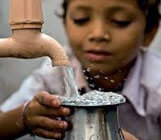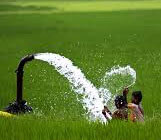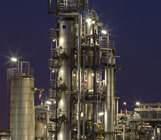Irrigation Projects
Irrigation is the replacement or supplementation of rainfall with water from another source in order to grow crops. The water source for irrigation may be lake, river, spring, well or snow pack. Depending on the distance of source and seasonal rainfall the water may be channelled directly to agricultural fields or stored in reservoirs for later use.
Scientific irrigation leads to flooding of areas, water logging, deposition of salts, reduced permeability of soil and cause for mosquito breeding. Irrigation techniques differ on how the water is obtained from the source and distributed with in the field based on requirement of the crop.
Types of irrigation:
- Canal Irrigation
- Sprinkler Irrigation including pivots
- Drip Irrigation
- Irrigation Pumpsets
Canal Irrigation
Open canals carry water over long distances and various topographical terrains. Canals can be cement lined and grouted to avoid seepage.
Canals are often classified as:
- Primary Canal – or main canal often follows the barrage
- Secondary Canal – or Branch canal
- Tertiary Canal – or Distributaries canal
Angelique also develops infrastructure around irrigation projects to support, fishing, landscaping, recreational activities, tourism etc.
Sprinkler Irrigation
Sprinkler irrigation is similar to artificial rainfall. Water is piped to central locations and distributed by overhead high pressure sprinklers or guns or by low pressure sprays most suitable for field crops and vegetables.
Sprinklers can also be mounted on moving platforms connected to the water source by a hose. Automatically moving wheeled systems known as traveling sprinklers may irrigate areas such as big farms, sports fields, parks and pastures. Most of these utilize a length of polyethylene tubing wound on a steel drum. As the tubing is wound on the drum powered by a motor or a small gas engine, the sprinkler is pulled across the field. When the sprinkler arrives back at the reel the system shuts off. Traveling irrigation sprinklers are used extensively for dust suppression, irrigation, and land application of waste water.
Centre Pivots
Center pivot irrigation is a form of sprinkler irrigation consisting of several segments of pipe (usually galvanized steel or aluminum) joined together and supported by trusses, mounted on wheeled towers with sprinklers positioned along its length. The system moves in a circular pattern and is fed with water from the pivot point at the center of the arc. These systems are found and used in all parts of the world and allow irrigation in all types of terrains.
Drip Irrigation
Water is delivered at the root of the plant drop by drop. Lower water pressures are needed and this is most effective method of irrigation. This method can be the most water-efficient method of irrigation, if managed properly, since evaporation and runoff are minimized.
Irrigation Pumpsets
These are simple centrifugal pumps coupled to manual start Diesel Engines (slow speed/high speed) and mounted on a base frame (skid/trolley).
With organized irrigation comes the need for efficient drainage to prevent water logging. In case of natural depressions drainage assumes significance and we set up projects for surface and sub surface drains.













